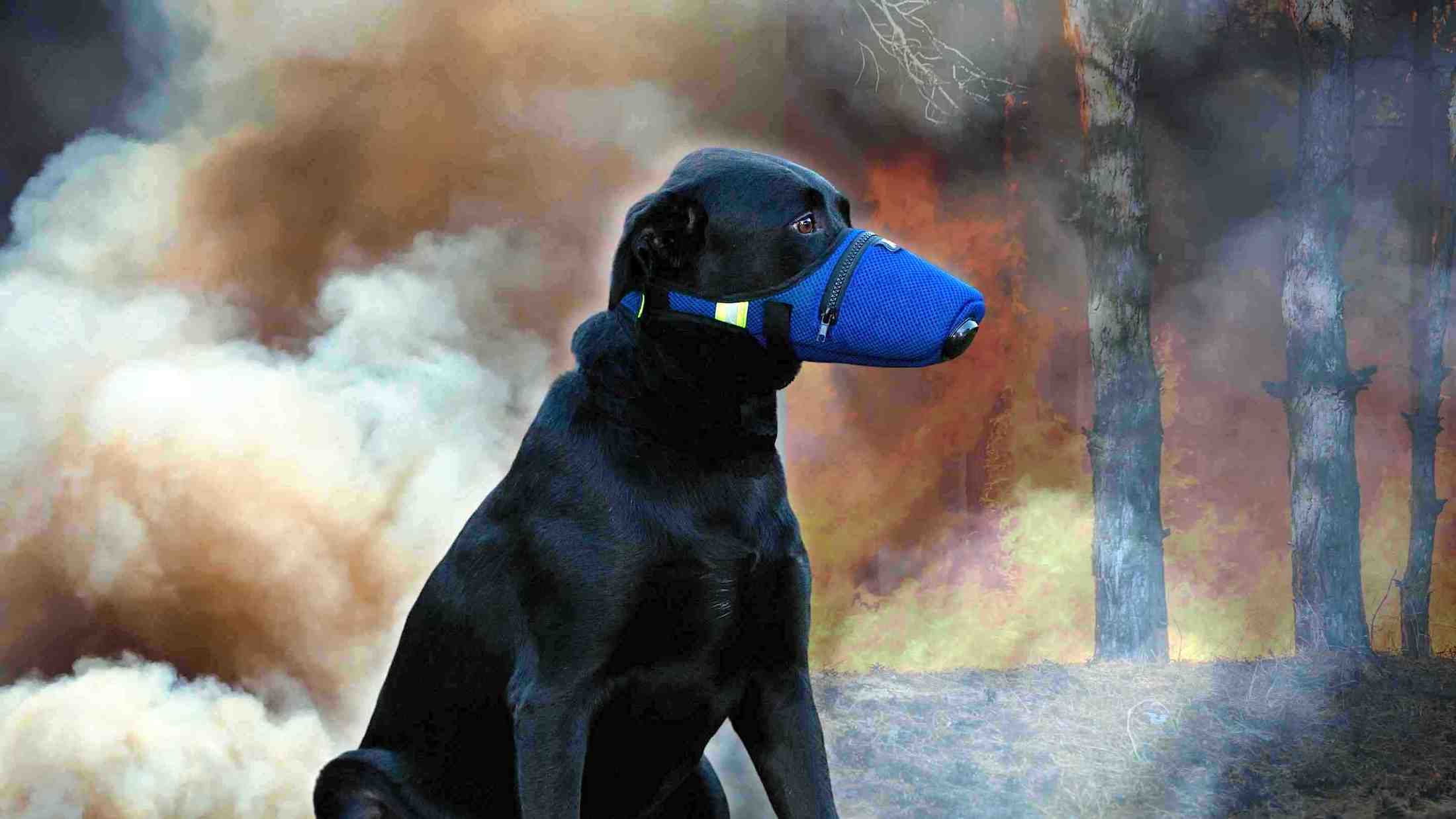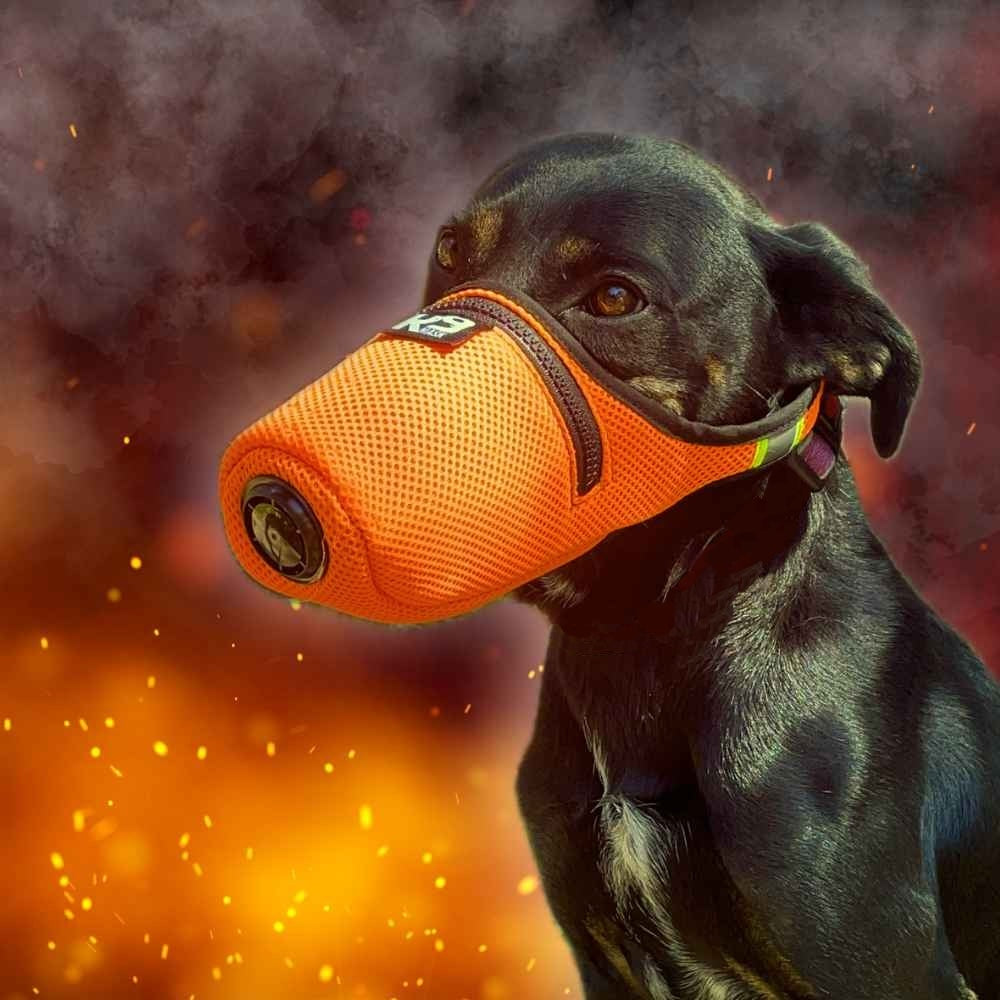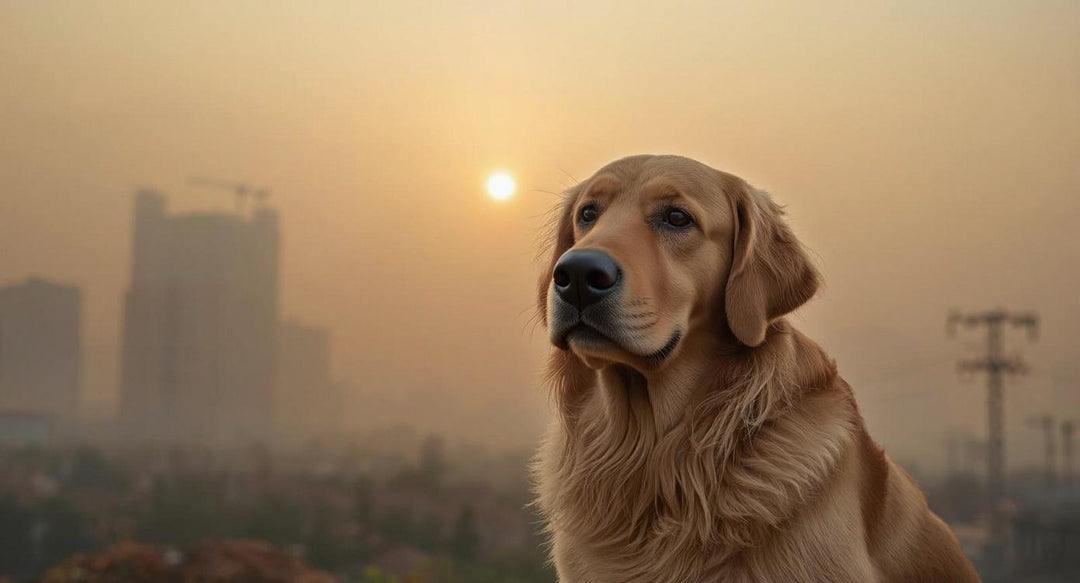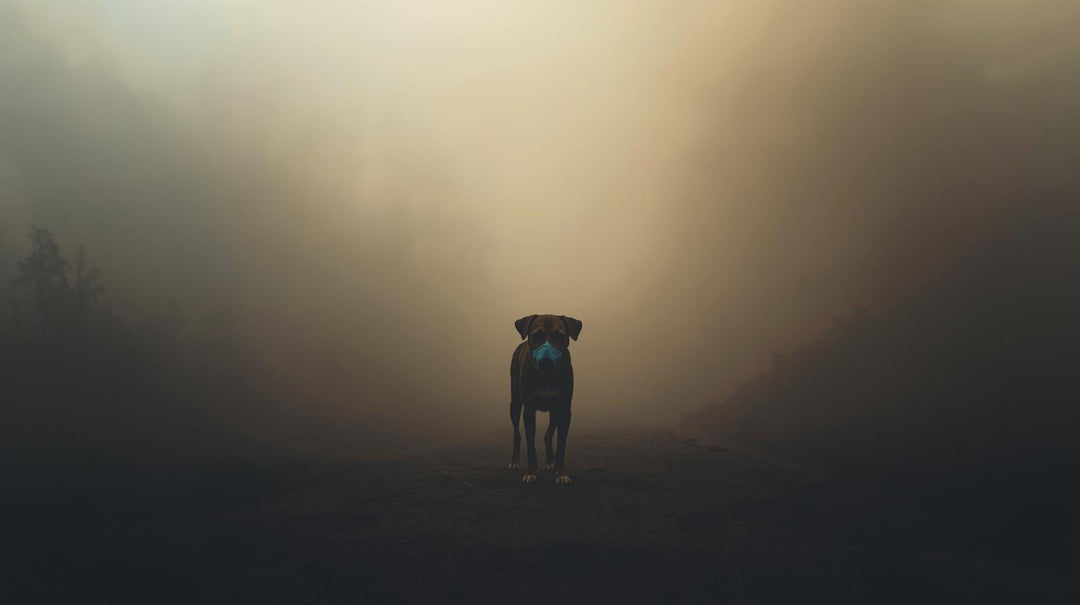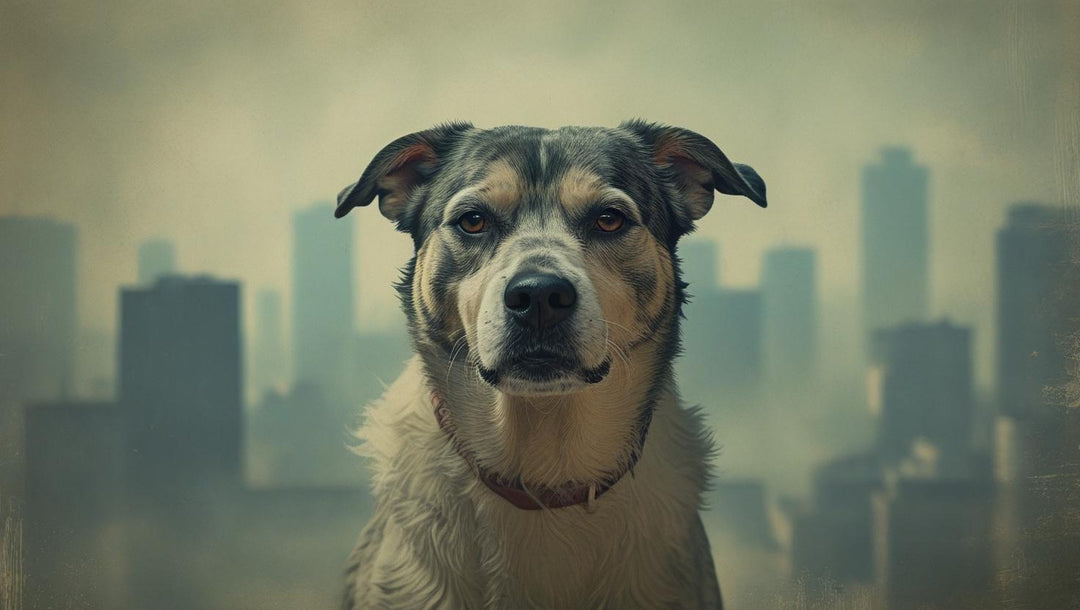Wildfires in the western United States this year have already proved to be massive and stunning. Wildfires burning across California, Oregon, Colorado, and Washington are producing soot, ash, and smoke filling the air amid searing heat.
Thick clouds of ash particles are wafting over cities and rural areas turning the Bay Areas’ sky orange? The tiny particles that comprise smoke are scattering the longer light wavelengths of reds and oranges to overwhelm the shorter wavelengths of blue, dimming the sun and creating a midday twilight.

But beyond the spooky glow, the smoke may be one of the biggest health threats from wildfires to people and dogs who are even hundreds of miles from the flames.
“The one thing that we’ve noticed in this season in particular … is just the geographic scale of the wildfire smoke, because there are so many large fires,” said Amy MacPherson, a spokesperson for the California Air Resources Board.
The dirty air could also worsen the symptoms associated with the respiratory infection. And in the coming days and weeks, the ongoing fires may continue to rage, with new ones cropping up.

It’s easy to lose sight of the smoke for the flames, especially when so many massive fires are burning at the same time. However, the billowing plumes from fires can become a major threat to the heart and lungs.
The smoke itself is a mixture of gases and particles like volatile organic compounds, carbon monoxide, soot, and ash. Right away, they can cause watery eyes and scratchy throats. But the biggest threats from smoke come from some of the tiniest particles, particularly those with a diameter smaller than 2.5 microns, known as PM2.5. These particles can penetrate deep into the airways, exacerbating heart and lung problems.

People and pets with heart and lung conditions should be aware of the additional risk during smoky conditions as wildfire smoke can increase the potential risk for serious cardiovascular and cerebrovascular conditions, such as heart attack and stroke.
Persistent exposure to these kinds of fine particles can be deadly. According to the World Health Organization, fine particle pollution, which can come from trucks, factories, and dust, leads to 7 million deaths per year around the world. Wildfire smoke poses a unique health threat compared to pollution from other sources. Suzanne Paulson, chair of the department of atmospheric and oceanic science at the University of California Los Angeles, noted there is emerging research indicating that wildfire smoke may be more toxic for a given mass than typical urban pollution.
 “The thing that is really different about wildfire smoke particles is that they have a bunch of unburned [or] partly burned plant material,” she said. “In the general urban pollution soup, it’s a relatively small component, whereas in wildfire smoke it’s very dominant.”
“The thing that is really different about wildfire smoke particles is that they have a bunch of unburned [or] partly burned plant material,” she said. “In the general urban pollution soup, it’s a relatively small component, whereas in wildfire smoke it’s very dominant.”
That unburned organic plant material can interact with metal elements, from other sources or the plants themselves, and increase the toxicity of those metals in the body. That can lead to more inflammation or cause neurological problems.
Dogs in exposure to air pollutants in wildfire smoke can irritate the lungs, cause inflammation, alter immune function, and increase susceptibility to respiratory infections.
Parts of the West Coast also have landscape and climate features that enhance the risk of pollutants like PM2.5. “We have really amazing geography for trapping pollution over the city,” Paulson said. Mountains surrounding Los Angeles can act as a basin, while the city’s location between the ocean and the desert creates multiple atmospheric configurations that pin down dirty air over Angelenos.
Another factor making the ongoing fire season’s air quality so hazardous is the sheer scale of the ongoing wildfires. With the amount of smoke these blazes are spewing, it becomes almost impossible to avoid it, even indoors.
“Outdoor pollution always comes inside,” said Ronald Cohen, a professor of atmospheric chemistry at UC Berkeley. “How much it does that depends on the local construction of homes.”
In parts of the West Coast with year-round moderate weather, like the San Francisco Bay Area, buildings are not always sealed to keep air out or in. In the Los Angeles area, about one in five households don’t have air conditioning. In the Bay Area, almost two-thirds of homes are without cooling.
With the recent record-breaking heat across the West Coast, stagnant air under high atmospheric pressure has trapped pollution from wildfires over urban areas.
The California Department of Public Health recommends staying indoors during periods of high air pollution and using tactics like running air conditioners with air filters and using a room air cleaner that has a high-efficiency particulate air (HEPA) filter.
But people without adequate cooling have been forced to choose between sealing up inside and opening windows to the smoke.

Together, these factors are fueling an urgent health crisis across a massive swath of the western United States.
In Oregon, all 82,000 residents of the town of Medford were evacuated Tuesday evening as the Almeda Fire encroached.
California has also been hit hard. The Bear Fire, which is part of the North Complex Fire, ignited Tuesday morning before spreading over more than 250,000 acres in 24 hours. It’s just one of more than two dozen major wildfires burning across the state in what has already been an extreme and unusual fire season.
According to the California Department of Forestry and Fire Protection (Cal Fire), wildfires across the state have now burned more than 2.2 million acres this year across all jurisdictions, a record amount, and there’s still four months left in the year. The ongoing fires have killed at least eight people and destroyed more than 3,300 structures.
“Wildfires have always been a part of the landscape in the West, but they’ve gotten so much worse,” said Paulson.
There are several key factors making wildfires more dangerous, almost all of them driven by humans. People are building more in high-risk areas for fires. That increases the risk of igniting a wildfire and the damage they can do. While many of the blazes that ignited in California in August were triggered by lightning strikes, the vast majority of wildfires are caused by people, whether via unattended camp fires, poorly protected power lines, or arson.

People have also suppressed many of the naturally occurring wildfires in the region, allowing vegetation to accumulate and subsequently dry out during periods of drought and extreme heat. That leaves more fuel to burn than would have been present if fires were to burn their natural course, or if more prescribed burns were conducted.
The surge in heat trapping gases in the atmosphere from burning fossil fuels is causing the planet to warm up. That is causing some of the forests in the West to dry out, making them vulnerable to pests like bark beetles and allowing them to burn more readily. Climate change is also increasing the likelihood of periods of extreme heat that help provide the ideal fuel for massive wildfires.
That’s why crimson skies and hazy air have become an alarmingly regular part of life for many in the West. “We find ourselves in these fire seasons where the number of people who are impacted by multiple days of high concentrations of particulate matter is really unique to the last few years,” said the California Air Resources Board’s MacPherson. “We’re talking millions of people.”
As we head into autumn, California’s strong seasonal winds are also poised to pick up. The Diablo winds in the north and the Santa Ana winds in the south can gust at speeds topping 70 mph, rapidly spreading fires and embers over wide swaths of dried out vegetation.
The combination of fuel, heat, high winds, and low humidity have led to red flag warnings for 28 million people living across Arizona, Washington, Oregon, California, and Nevada. In California, the coming days will bring “strong, gusty winds and low humidity, increasing activity on current fires and can cause new fire starts to grow rapidly,” according to Cal Fire.




